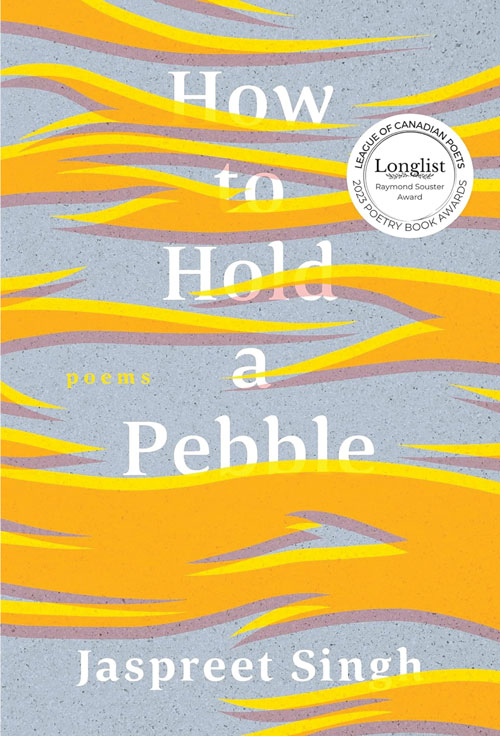Jaspreet Singh’s How to Hold a Pebble is published under NeWest Press’s “Crow Said” poetry series in honour of Robert Kroetsch, which emphasizes “places and people outside the literary mainstream” and features poets who “will continue Kroetsch’s literary tradition of innovation, interrogation and generosity of spirit.” Singh and his poetry collection are an ideal representative of the spirit of this series.
Singh’s first poem, “Six Months Ago,” ends with the image of a raven performing two “little love pantoums/ meant to linger/ within me// They linger”, a perfect opening to a collection of poems that also linger in the mind, to the point of haunting, as love poems to the earth. As with this one, many of the poems are deceptive in their smallness, their understatement, but, like a pebble, hold deep complexities. The poem “The Zoo,” for instance, sees a taxi driver admonish the speaker for taking his parents to the zoo, noting that “North America and/ Europe used to display/ non-white/ people in zoos” and suggesting instead to “Show respected parents the Athabasca/ Glacier before it melts”, again reminding the reader of imminent ecological collapse.
The collection is remarkable for the variety of forms Singh deftly employs—from free-verse lyric poetry, reminiscent perhaps of Ondaatje’s early lyricism, to masterful ghazals and the formal experimentation of, for instance, “Cyclone,” in which lines whirl across the page division and words swirl to mimic the cyclical chaos of a storm:
“apart Things Things Falling were”
The same words whip past and return, repeating in a different disorder, as objects might in a cyclone—form here not just reflecting but becoming content.
Of particular note is “Whyte Avenue,” an ekphrastic poem that takes a freshly painted mural on Whyte Avenue as the focal point of an extended meditation on art, community, belonging and desire in the Anthropocene. The poem gently invites us to look at a woman looking at a mural of a whale as others on the street “join her/ in the looking”. The speaker watches them watching and feels “I have entered the mimetic/ desire of the first woman”. But the speaker also feels he is “outside/ the frame”. Whether he’s entered the frame of desire or remains outside is an uncertainty that arises because “times have/ changed. Mural making/ and watching have changed”. These changes are simultaneously personal and global: “The sea is rising” in part because Whyte Avenue “will keep making/ heat”; this poem, like so many in the collection, hangs under the shadow of the climate crisis.
Innovative and searching, this rich collection will linger, will haunt, may gently sink beneath your wisdom like a pebble.
Jay Gamble teaches in the English department at the U of L.
_______________________________________


